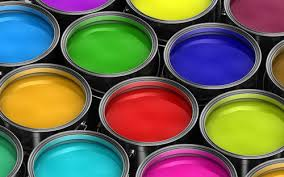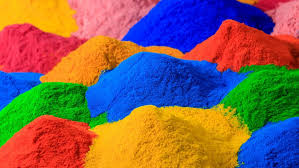
The demand for organic pigments continues to grow. Which industries are driving the development of the pigment market?
Pigments, as colorants with bright colors and strong tinting strength, are indispensable coloring materials in the production process of industrial products. In addition to meeting the need for coloring industrial products and making them beautiful and easy to identify, pigments can also improve the products’ weather resistance and special properties.
Pigments are mainly used in coatings, inks, printing and dyeing, plastic products, papermaking, rubber products, ceramics and other industries. With the rapid growth of downstream industries, the demand for pigments continues to expand, and the development prospects of China’s pigment industry are very broad.
At present, the concentration of China’s pigment industry is low, and there are many manufacturers; the technical differences among various manufacturers are large, and homogeneity and disorderly competition are serious, which has compressed the profit level of the entire industry and affected the competition of Chinese pigment products in the international market force. With the guidance of national industrial policies and the tightening of environmental protection policies, larger pigment manufacturing companies with financial and technical advantages will gradually gain a larger market share. In comparison, smaller companies will be gradually eliminated due to shortage of funds, backward technology, and lack of Investment in environmental protection.
In recent years, as environmental protection and safety policies have become increasingly strict, the environmental protection pressure on the pigment manufacturing industry and its downstream industries has increased day by day. Many small and medium-sized enterprises that lack environmental protection investment have shut down production capacity or stopped production for rectification, which has directly affected the development of the pigment manufacturing industry. Production capacity. Therefore, pigment manufacturing companies must upgrade their products and processes.

Analysis of the history and future path of the pigment market
Technological advancements in pigment production and increasing usage of pigments in the food and beverage industry are expected to boost market growth. The impact of light, temperature and pH on pigment stability and colour is an area of active research and development, which may lead to innovations and opportunities in the pigment market.
The climbing need for pigments in emerging economic climates such as India, China, and Brazil is driving the development of the worldwide pigments market. These economies are witnessing big developments in building, automotive, and other end-use businesses. Hence, the application trends of pigments are forecast to continue to increase in height.
Short term (2023-2026):Â Rising awareness of environmental issues and the need for eco-friendly solutions drive the shift towards water-based pigments. Water-based pigments are non-toxic and generate less waste, making them an attractive option for various industries, thus driving the growth of the pigments market in the coming years;
Mid-term (2026-2029): High-performance pigments provide better color stability, increased durability, and improved resistance to external factors such as light and heat. The climbing need for high-performance pigments from markets such as auto layers, aerospace, and electronics is driving the development of the pigments market over the projection period;
Lasting (2029-2033):Â Pigments are widely used in the packaging market to improve the visual allure of items, increase brand recognition, and expand the life span of items. The expanding need for lasting and green packaging services will drive the development of the pigments market in the long term.
According to market research and consulting company Reality, the market is expected to show a substantial annual growth price of 5.4% between 2023 and 2033.
The important role of chromium oxide in pigments
A pigment is a substance used to dye, color, or decorate objects. They play an important role in various fields, including painting, printing, cosmetics, and plastic products. Chromium trioxide (Cr₂O₃), as a common inorganic pigment, plays an important role in many applications.
Ceramic industry:Â Chromium oxide is widely used in preparing ceramic pigments, giving ceramics rich colors such as green, yellow, and red. In addition, chromium oxide is also used to enhance the wear and heat resistance of ceramic products.
Glass industry:Â Chromium oxide is used in the glass industry to give glass green, blue, red and other colors. In addition, adding chromium oxide can also improve the heat resistance and corrosion resistance of glass.
Source from: www.xianjichina.com
Supplier
TRUNNANO is a supplier of chromium oxide with over 12 years experience in nano-building energy conservation and nanotechnology development. It accepts payment via Credit Card, T/T, West Union and Paypal. Trunnano will ship the goods to customers overseas through FedEx, DHL, by air, or by sea. If you are looking for high-quality chromium oxide, please feel free to contact us and send an inquiry.